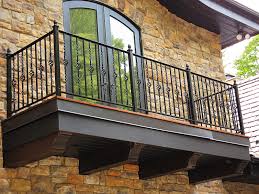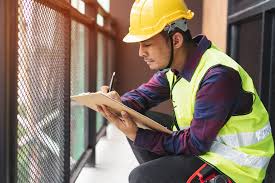
California Balcony & Deck Inspection:
SB721(Apt) / SB326(Condo)
California's Health & Safety Code §17973, which was created by SB 721 in 2018, refined the definition of Exterior Elevated Elements (EEE) with the additional property: the element relies on wood or wood-based products for structural support.
Starting Jan 01, 2020, SB 326 bill will require “…the association of a condominium project to cause a reasonably competent and diligent visual inspection of exterior elevated elements, defined as the load-bearing components and associated waterproofing systems, as specified, to determine whether the exterior elevated elements are in a generally safe condition and performing in compliance with applicable standards.”
Raising “The Bar” In Reserve Studies
Condo HOAs in California have to follow the Davis-Stirling Common Interest Development Act. One of the major components of that law is Civil Code Section 5550, which is conducting a reserve study every three years.
SB 326 states that the EEE inspections are to be done once every nine years and that the inspection report is to be incorporated into the reserve study. The report includes detailed information on each inspected element’s condition, expected future performance and remaining useful life, and repair/replacement recommendations.
By incorporating the EEE report into the reserve studies, the consultants who perform them will have access to high-quality information to more accurately estimate the total annual contribution to repair or replace balconies, stairways, and other exterior elements.

The bill also requires the inspector to submit a report to the board of the association providing specified information, including the current physical condition and remaining useful life of the load-bearing components and associated waterproofing systems.
The bill would require the inspector to provide a copy of the inspection report to the association immediately upon completion of the report, and to the local code enforcement agency within 15 days of completion of the report, if, after inspection of any exterior elevated element, the inspector advises that the exterior elevated element poses an immediate threat to the safety of the occupants.
The bill would require the association to take preventive measures immediately upon receiving the report, including preventing occupant access to the exterior elevated element until repairs have been inspected and approved by the local enforcement agency.
The bill would authorize local enforcement agencies to recover enforcement costs associated with these requirements from the association.
The bill would authorize the association board to enact rules or bylaws imposing requirements greater than those imposed by these provisions.
Inspections must be completed every nine years. The first inspection must be completed by the end of 2024. Buildings being constructed after this law goes into effect will need to complete their first inspection within six years of issuance of a certificate of occupancy.
What Are Exterior Elevated Elements?
An Exterior Elevated Element (EEE) per CA Civil Code §5551(a)(2) "Exterior Elevated Elements means the load-bearing components together with their associated waterproofing system."
- It extends beyond a building's exterior walls
- It is designed for human use
- Has a walking surface more than 6 feet above ground level
- Have load-bearing components made with wood or wood-based products
They include balconies, decks, porches, stairways, walkways and entry structures.
It sounds vague and confusing until you read §5551(a)(1) and §5551(a)(3) which unpacks the nested definitions:
- “Associated waterproofing systems” include flashings, membranes, coatings, and sealants that protect the load-bearing components of exterior elevated elements from exposure to water.
- “Load-bearing components” means those components that extend beyond the exterior walls of the building to deliver structural loads to the building from decks, balconies, stairways, walkways, and their railings, that have a walking surface elevated more than six feet above ground level, that is designed for human occupancy or use, and that are supported in whole or in substantial part by wood or wood-based products.
In addition to inspecting EEEs, another major change implemented by the bill is that no HOA governing documents can impose any preconditions or limitations to the board’s authority to commence and pursue legal proceedings against the developer or builder. It also nullifies any existing terms in associations’ covenants, conditions and restrictions (CC&Rs).
Are There Any Record-Keeping Requirements?
 For SB 326, the EEE inspection report is stamped by the professional and it gets incorporated into the HOA's Reserve Study. The association needs to keep copies of at least two inspection cycles worth of inspection reports in their permanent records.
For SB 326, the EEE inspection report is stamped by the professional and it gets incorporated into the HOA's Reserve Study. The association needs to keep copies of at least two inspection cycles worth of inspection reports in their permanent records.
There are two other related statements in §17973 the association should be aware of: one is "subsequent inspection reports shall incorporate copies of prior inspection reports, including locations of exterior elevated elements inspected." The second is the law allows local enforcement to determine if the report should be submitted to them.
What Reports Must Be Generated From the Inspection?
The inspector must issue a written report that includes:
- Identification of the applicable building components subject to inspection;
- The current physical condition of the components and whether there is a present threat to the health or safety of residents;
- Expected future performance of the components and remaining useful life; and
- Recommendations for any repairs.
The inspector’s report must be stamped or signed and included in the association’s reserve study. The reports generated must be preserved in the association’s records for a period of at least two inspection cycles.
The five-year window to complete the first inspection will allow associations to coordinate the first balcony inspections to take place with an upcoming reserve study inspection. The nine-year balcony inspection cycles will then coordinate with every third reserve study inspection going forward.
Prior to moving forward, an association should also confirm that there are no more stringent inspection requirements in its governing documents or required by local government or enforcement agencies, as the code allows for more stringent requirements to be adopted locally.
Who Can Perform EEE Inspections?
(Building Envelope Consultants)
SB 326 is more stringent, there are only two professions who can perform Exterior Elevated Element inspections for condos:
 Licensed Architect
Licensed Architect- Licensed Structural Engineer
The reason why contractors/certified inspectors aren't included in SB 326 is that the inspector is required to stamp the inspection report (meaning they are taking legal responsibility as a licensed professional that the report is correct as possible according to the relevant codes).
Scope of Inspections
Instead of a set percentage the SB 326 requires a random statistically significant sample (95% confidence, ±5% error margin) of exterior elements in which the association has maintenance or repair responsibility.
For those not well versed in statistics, this means for smaller complexes and buildings nearly all EEEs will need to be inspected while larger associations a substantial percentage will still be looked at.
Reprinted from
Davis-Stirling.com by ADAMS | STIRLING PLC

